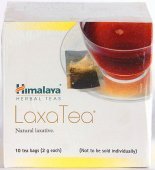Tamarindus indica: 3 definitions
Introduction:
Tamarindus indica means something in Hinduism, Sanskrit, biology. If you want to know the exact meaning, history, etymology or English translation of this term then check out the descriptions on this page. Add your comment or reference to a book if you want to contribute to this summary article.
In Hinduism
Ayurveda (science of life)
Agriculture (Krishi) and Vrikshayurveda (study of Plant life)
Source: Asian Agri-History: Drumavichitrikaranam—The Ancient Approach to Plant MutagenesisTamarindus indica (Tamarind) was used in a recipe to accelerate fruit droppings: which was one of the technologies known to ancient Indian agriculturists, which presents a safe technology and methodology regarding organic agriculture, according to treatises (such as the Vrikshayurveda). One such technology was to selectively ripen fruits as well as to delay or accelerate fruit dropping: Harvesting and fruit dropping are critical factors which can alter the shelf-life and the taste of the fruit by the time it reaches the end-user, the customer. [...] A number of queer raw materials such as wet hides of animal, bones of a monkey, ichor (elephant’s rut) and nose bone of elephant have been prescribed in the treatises to delay ripening. In order to accelerate fruit dropping concoctions of Tamarindus indica (tamarind), Ziziphus mauritiana (Indian jujube), Terminalia arjuna (arjuna) and Citrus limon (lemon) are prescribed.
Source: Shodhganga: Drumavichitrikarnam—Plant mutagenesis in ancient IndiaTamarindus indica (in Sanskrit: Tittiḍikā) can be manipulated into a creeper using various bio-organical recipes for plant mutagenesis, according to the Vṛkṣāyurveda by Sūrapāla (1000 CE): an encyclopedic work dealing with the study of trees and the principles of ancient Indian agriculture.—Accordingly, “Tamarindus indica [e.g., Tittiḍikā] is grown into an excellent creeper if fed with water, mixed with the powder of Embelica officinalis, Terminalia bellirica and Terminalia chebula, Sesamum indicum, Hordeum vulgare, and Vigna mungo and then smoked well with the Curcuma longa powder.

Āyurveda (आयुर्वेद, ayurveda) is a branch of Indian science dealing with medicine, herbalism, taxology, anatomy, surgery, alchemy and related topics. Traditional practice of Āyurveda in ancient India dates back to at least the first millenium BC. Literature is commonly written in Sanskrit using various poetic metres.
Biology (plants and animals)
Source: Google Books: CRC World Dictionary (Latin names; Binomial nomenclature)Tamarindus indica L. is the name of a plant defined in various botanical sources. This page contains potential references in modern medicine, Ayurveda, and other local traditions or folk medicine. It has the following synonyms: Tamarindus erythraeus Mattei, Tamarindus occidentalis Gaertn., Tamarindus officinalis Hook., Tamarindus somalensis Mattei, Tamarindus umbrosa Salisb..
References regarding Tamarindus indica L. for further research on medicinal uses or toxicity:
· Species Plantarum (1753)
· De Fructibus et Seminibus Plantarum (1791)
· Prodromus Stirpium in Horto ad Chapel Allerton vigentium (1796)
· Botanical Magazine (4563)
· FBI (1878)
· Boll. Ort. Bot. Palermo (1908)
· Journal of Ethnopharmacology (1982)
· Journal of Tree Sciences (1985)
· Journal of Ethnopharmacology (1985)
· Sci. Rep. Res. Inst. Evol. Biol. (1986)
· Journal of Ethnopharmacology (1987)
· Journal of Cytology and Genetics (1988)
· Journal of Cytology and Genetics (1989)
· Kromosomo (1787)
· Acta Botanica Austro Sinica (1989)
· Economic Botany (1990)
· Proceedings of the Indian Academy of Sciences. Plant Sciences (1990)
· Regnum Vegetabile, or ‘a Series of Handbooks for the Use of Plant Taxonomists and Plant Geographers’ (1993)
· Journal of Ethnopharmacology (1993)
· Journal of Economic and Taxonomic Botany (1996)
· Journal of Ethnopharmacology (1997)
· Journal of Ethnopharmacology (2002)
· Journal of Ethnopharmacology (2003)
· Journal of Ethnopharmacology (2005)
· Journal of Ethnopharmacology (2005)
· Journal of Ethnopharmacology (2006)
· Journal of Ethnopharmacology (2006)

This sections includes definitions from the five kingdoms of living things: Animals, Plants, Fungi, Protists and Monera. It will include both the official binomial nomenclature (scientific names usually in Latin) as well as regional spellings and variants.
See also (Relevant definitions)
Full-text (+320): Sutintidi, Pishtaundi, Shvetamli, Sutintida, Tittidika, Cinca, Amla, Amli, Amlika, Abdika, Kumukhuwa, Salomangue, Toumbi, Oloisijoi, Diami, Homar, Mithingiti, Rogei, Monte, Djammi.
Relevant text
Search found 3 books and stories containing Tamarindus indica; (plurals include: Tamarindus indicas). You can also click to the full overview containing English textual excerpts. Below are direct links for the most relevant articles:
Indian Medicinal Plants (by Kanhoba Ranchoddas Kirtikar)
The Skanda Purana (by G. V. Tagare)
Chapter 9 - The Procedure for Naivedya < [Section 5 - Mārgaśīrṣa-māhātmya]
Pallava period (Social and Cultural History) (by S. Krishnamurthy)
Topography, Geography and Geology of the Region (Tondaimandalam) < [Chapter 1 - Introduction]
Related products


